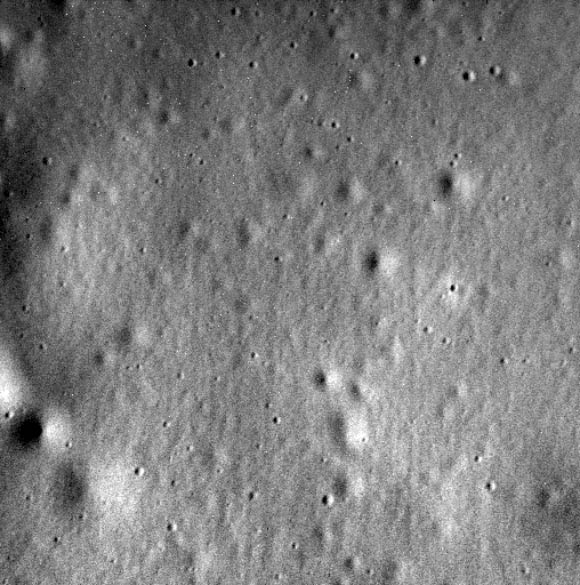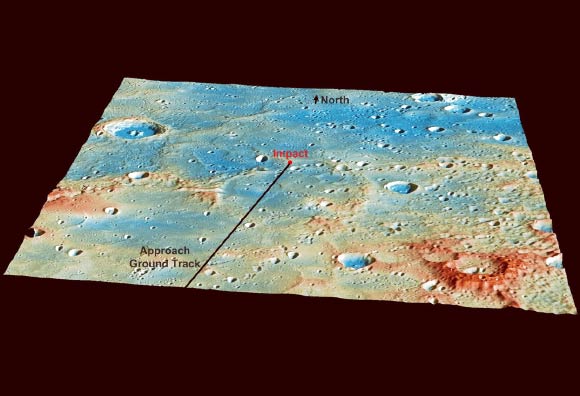This image is the last one captured and beamed back to Earth by NASA’s MESSENGER spacecraft.

This image from MESSENGER is located within the floor of the 93-km-diameter crater Jokai. Image credit: NASA / Johns Hopkins University Applied Physics Laboratory / Carnegie Institution of Washington.
Originally planned to orbit Mercury for one year, the MESSENGER mission exceeded all expectations, lasting for over four years and acquiring over 250,000 images and extensive datasets with its seven scientific instruments.
The spacecraft determined the planet’s surface composition, revealed its geological history, discovered that its internal magnetic field is offset from the planet’s core.
MESSENGER allowed planetary researchers to learn about Mercury’s unusual internal structure, the chemical composition of its exosphere with season and time of day.
The probe also discovered new aspects of Mercury’s active magnetosphere, and verified that planet’s polar deposits are dominantly water ice.
It crashed into the planet on April 30 at 3:26 p.m. EDT (12:26 p.m. PDT, 7:26 p.m. GMT, 9:26 p.m. CET).

MESSENGER’s impact location: the tallest regions are colored red and are roughly 3 km (1.9 miles) higher than low-lying areas such as the floors of impact craters, colored blue; the large crater on the left side of the image is Janacek, with a diameter of 48 km (30 miles). Image credit: NASA / Johns Hopkins University Applied Physics Laboratory / Carnegie Institution of Washington.
Traveling some 8,750 mph (3.91 km per second), the spacecraft struck Mercury just north of the 400-km-diameter impact basin Shakespeare.
The Shakespeare basin is located in the Shakespeare quadrangle, which is named after this basin. It is filled with smooth plains material, likely due to extensive lava flooding in the past.
According to the MESSENGER mission scientists, the spacecraft created a new crater roughly 16 m (52 feet) in diameter.







